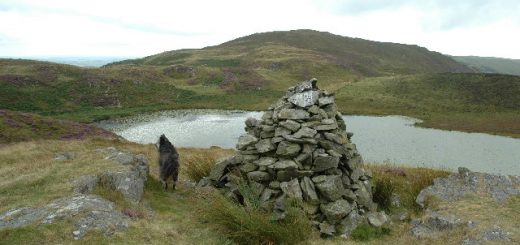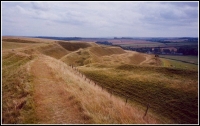Arthur’s Stone
Arthur’s Stone is the name given to the remains of a Neolithic chambered tomb. Aged around 5000 years old (3700BC – 2700BC), the monument consists of a huge cap stone weighing over 25 tonnes and nine upright stones. Originally this tomb would have been buried under a 25 meter long mound running north to south with the entrance being on the south side with a 4.6 meter passageway.
![UKgeofan at English Wikipedia [CC BY-SA 3.0 (https://creativecommons.org/licenses/by-sa/3.0) or GFDL (http://www.gnu.org/copyleft/fdl.html)]](http://www.mysteriousbritain.co.uk/wp/wp-content/uploads/2018/12/789px-Arthurs_Stone-300x228.jpg) As the name suggests, Arthur’s Stone is linked with Arthurian legends. Cup marks on the Quoit stone have traditionally been associated to King Arthur and it has been suggested they were created whilst he knelt praying here. Another suggestion is that they are indentations created by a giant’s elbows as he fell after backwards after being killed by King Arthur. Some stories suggest that either the said dead giant or Arthur were buried here.
As the name suggests, Arthur’s Stone is linked with Arthurian legends. Cup marks on the Quoit stone have traditionally been associated to King Arthur and it has been suggested they were created whilst he knelt praying here. Another suggestion is that they are indentations created by a giant’s elbows as he fell after backwards after being killed by King Arthur. Some stories suggest that either the said dead giant or Arthur were buried here.
The author CS Lewis is thought to have been inspired by the Golden Valley and the Wye Valley whilst creating his fictional world of Narnia (The Lion the Witch and the Wardrobe, The Chronicles of Narnia) and the stone table upon Asland the Lion is sacrificed is said to have based upon Arthur’s Stone.























Recent Comments